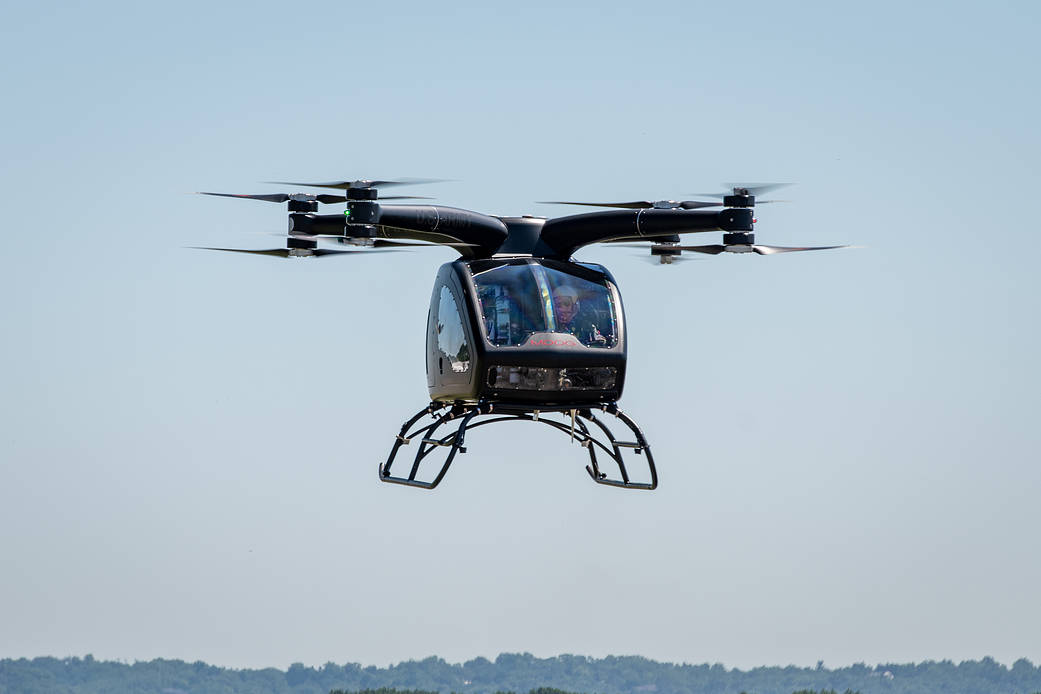NASA is taking a leading role to help integrate new types of Advanced Air Mobility aircraft like air taxis and delivery drones into the sky, helping emerging markets to safely develop an air transportation system that moves people and cargo between places previously not served or underserved by aviation. NASA is working with private sector developers of electric vertical take-off and landing (eVTOL) aircraft, like Moog Surefly, to study the levels of noise they make.
In this photo from summer 2022, the Moog Surefly vehicle hovers above an array of 28 ground-level microphones at Cincinnati Municipal Airport. The microphones picked up noise data, which researchers from our Glenn Research Center in Cleveland will analyze and share the data with Moog. Data from tests like the one seen here will be used to improve aircraft design and reduce noise impacts on communities where eVTOLs will take off, fly, and land.
Learn more about this acoustic hover test here.
Image Credit: NASA
NASA正在发挥主导作用,帮助将空中出租车和无人机等新型先进空中机动飞机整合到空中,帮助新兴市场安全地发展空中运输系统,在以前没有航空服务或服务不足的地方之间运送人员和货物。NASA正在与私营部门的电动垂直起降(eVTOL)飞机开发商合作,如穆格SureFly,研究它们产生的噪音水平。
在这张2022年夏天的照片中,穆格SureFly飞行器悬停在辛辛那提市政机场的28个地面麦克风阵列上方。麦克风采集噪音数据,克利夫兰格伦研究中心的研究人员将分析这些数据,并与穆格分享。像这里看到的测试数据将用于改进飞机设计,并减少eVTOLs起飞、飞行和降落对社区的噪声影响。
图片来源:NASA







